The document provides an overview of exception handling in Java. It discusses the key concepts like try, catch, throw, throws and finally blocks. Exceptions can be checked, unchecked or errors. Checked exceptions must be declared or handled while unchecked occur due to programming errors. The try block contains code that might throw exceptions. Corresponding catch blocks handle specific exception types. Finally blocks contain cleanup code that always executes.

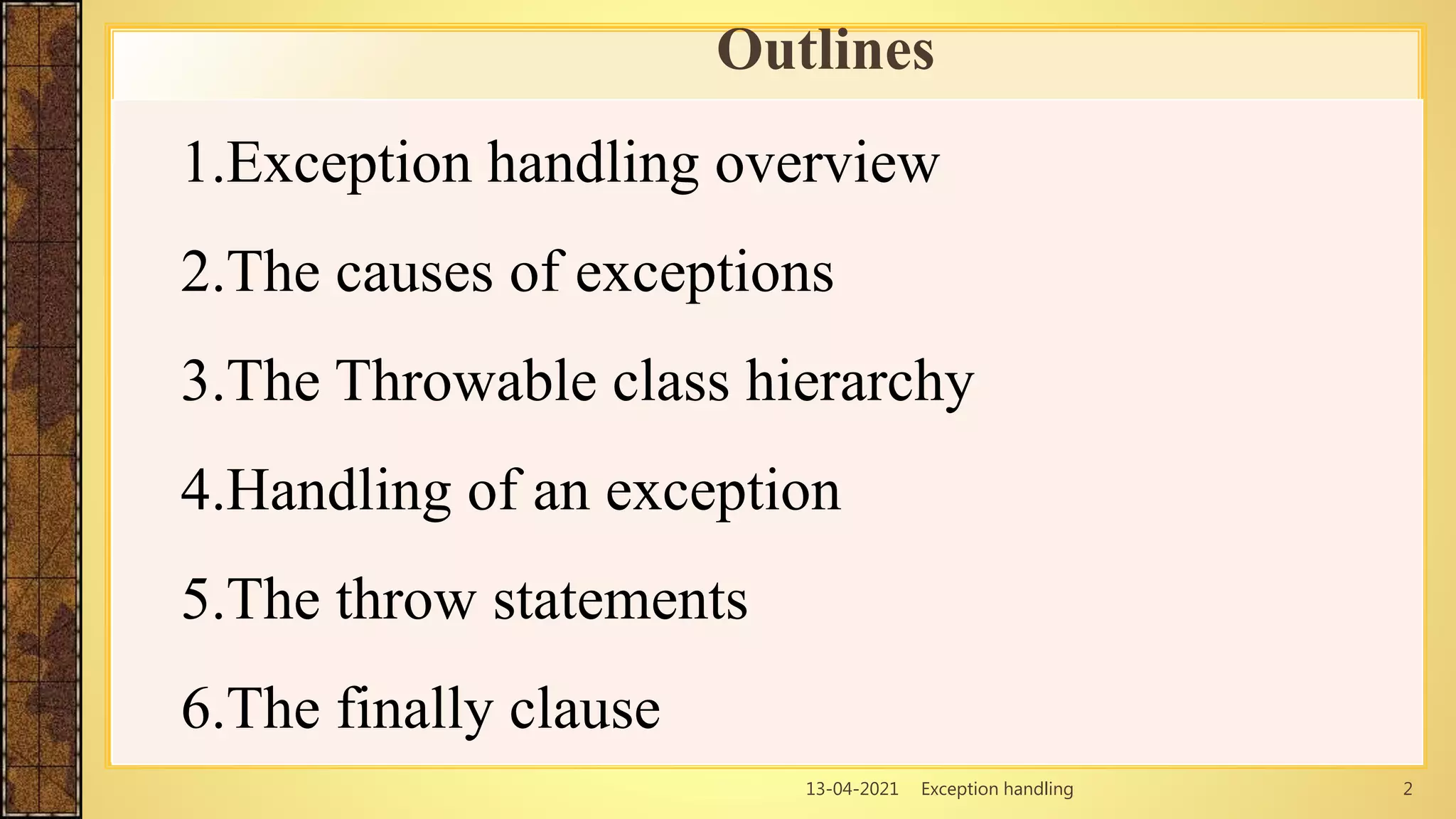
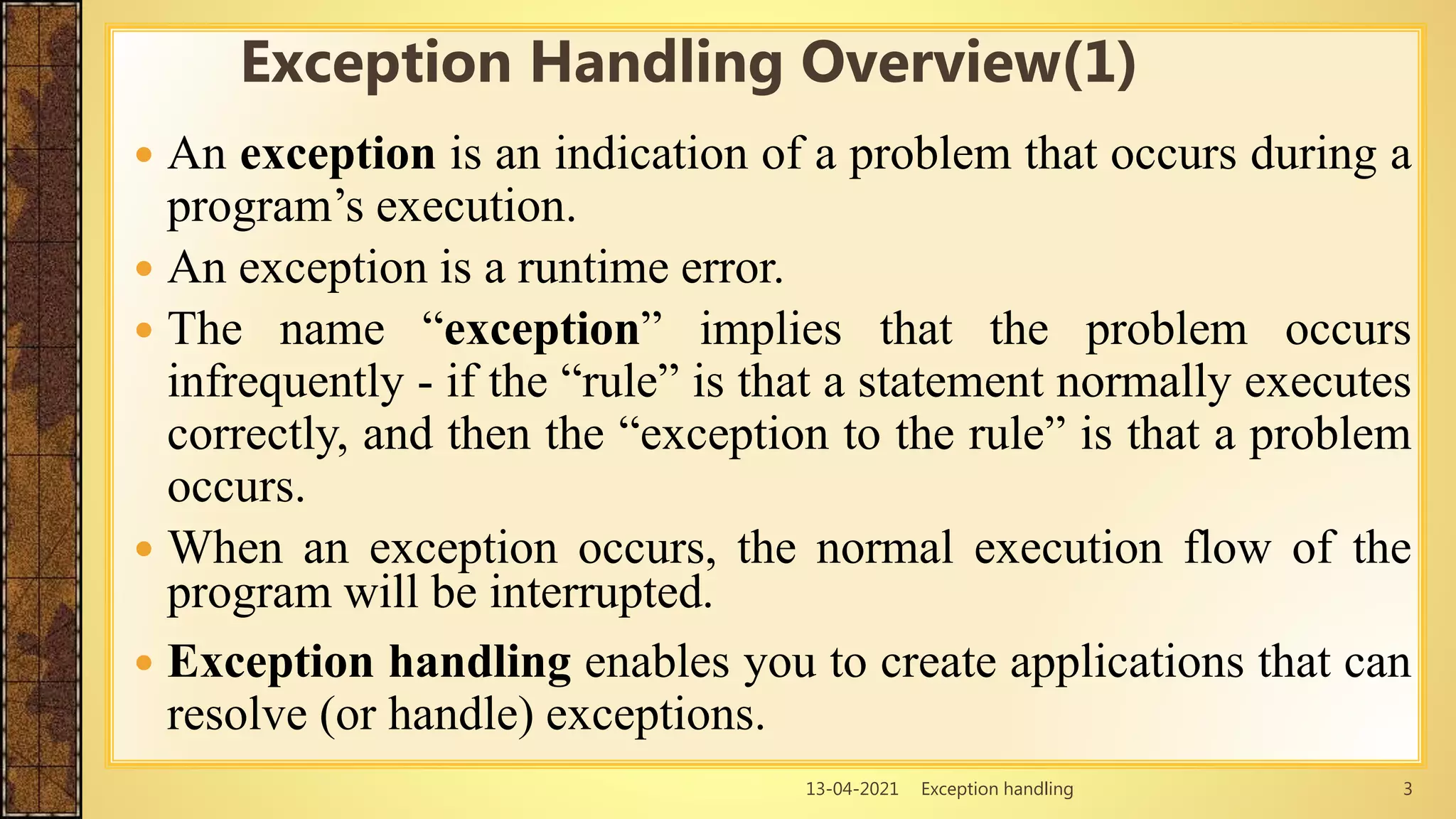

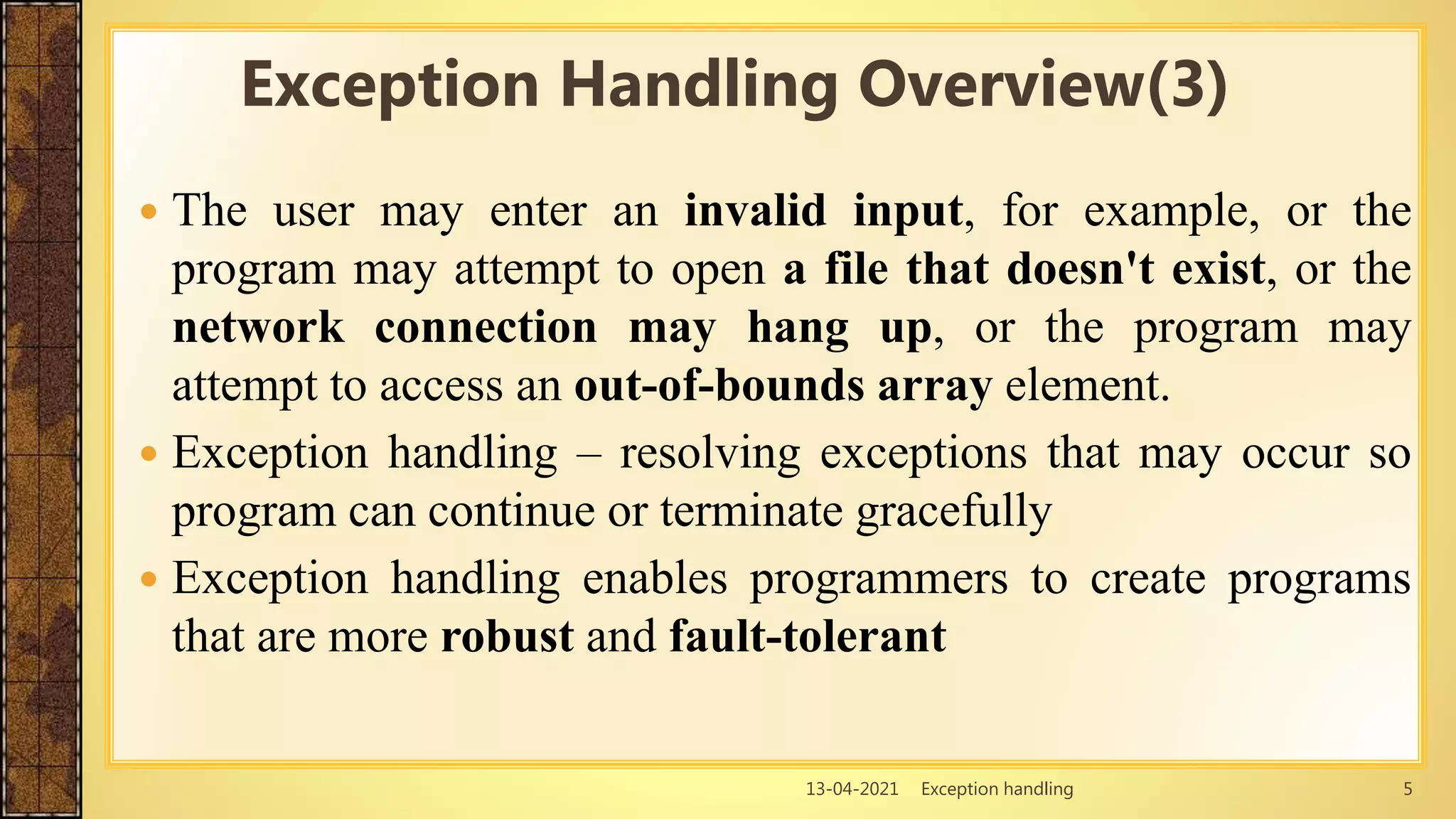



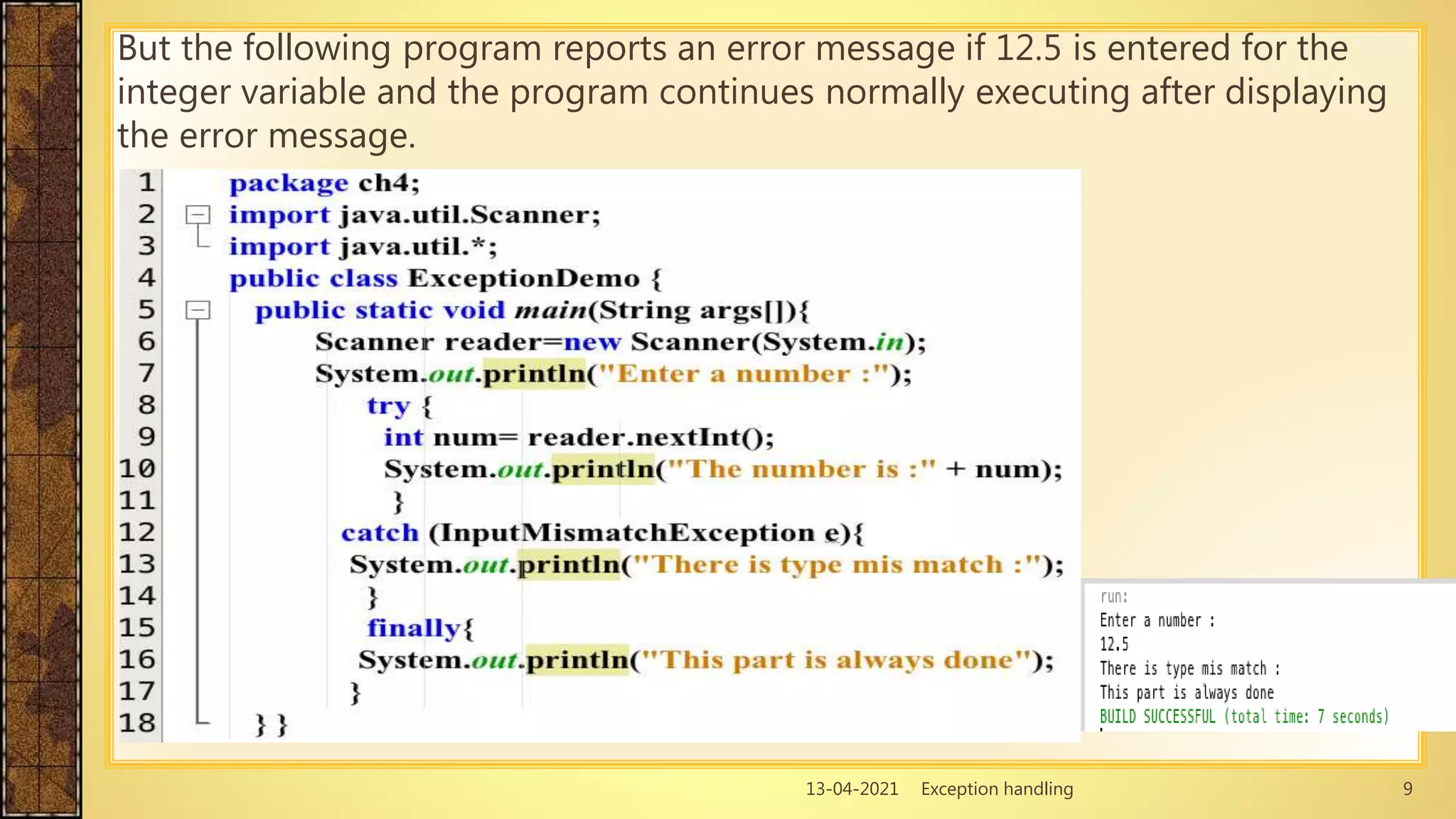
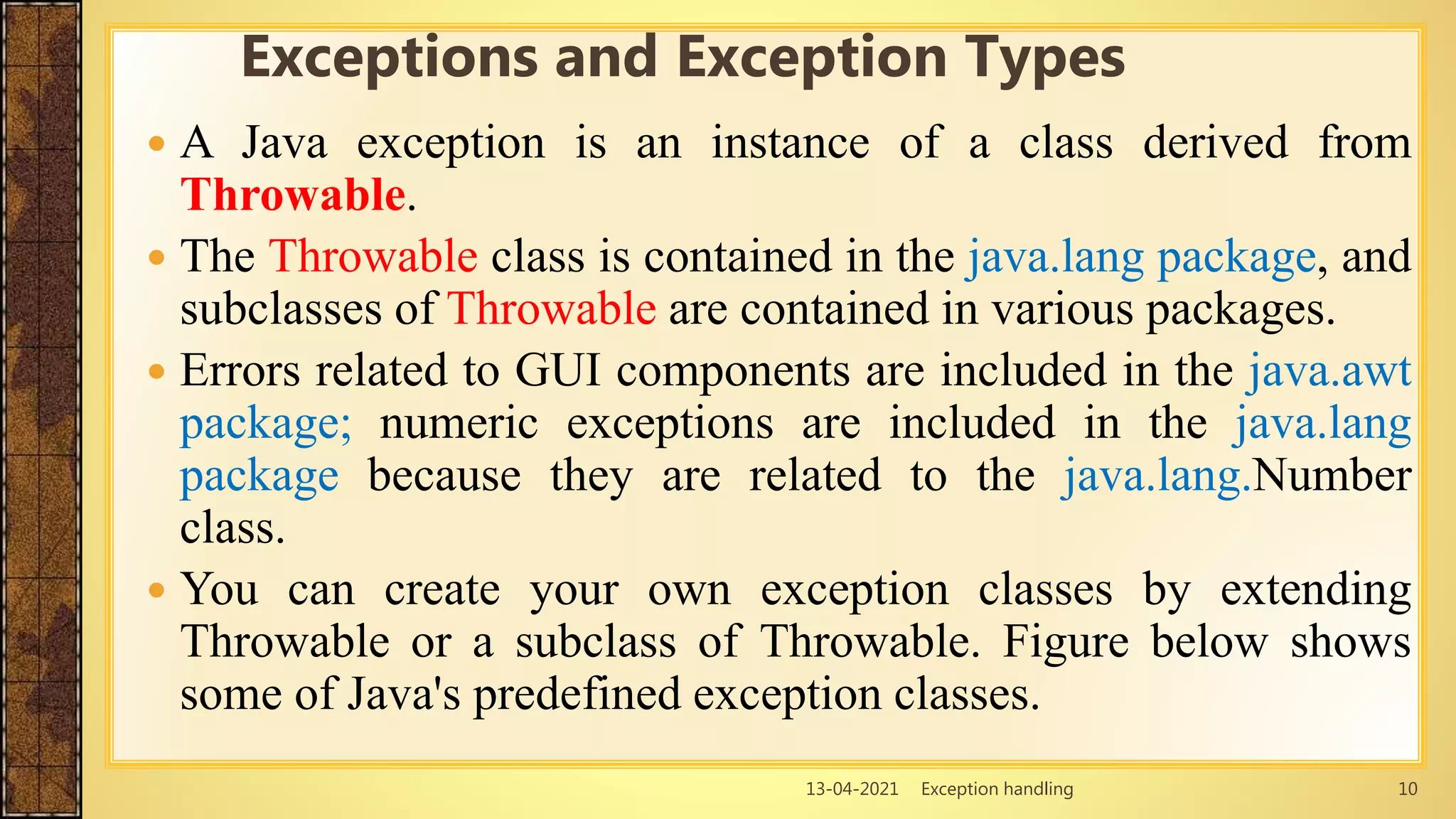

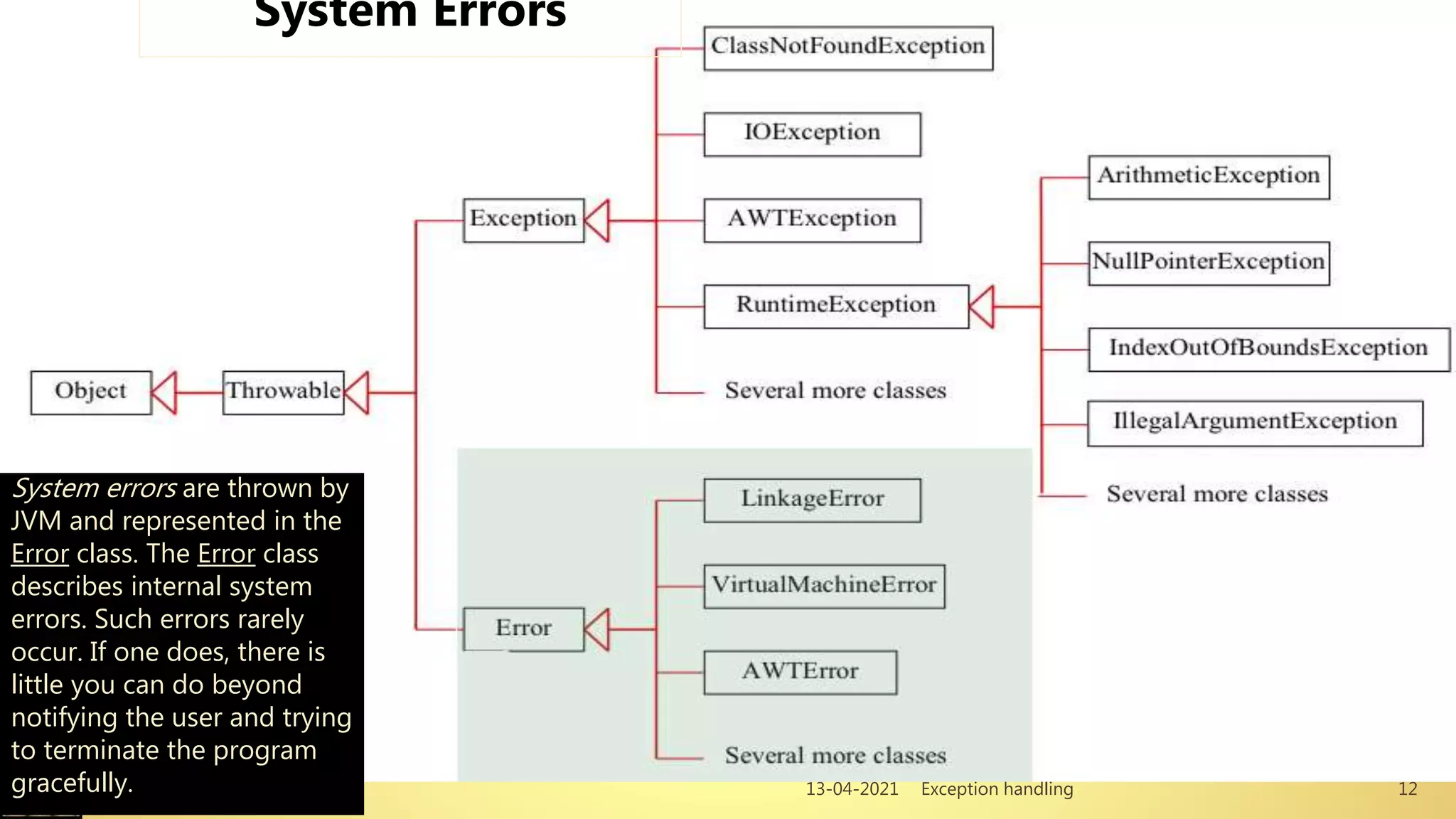

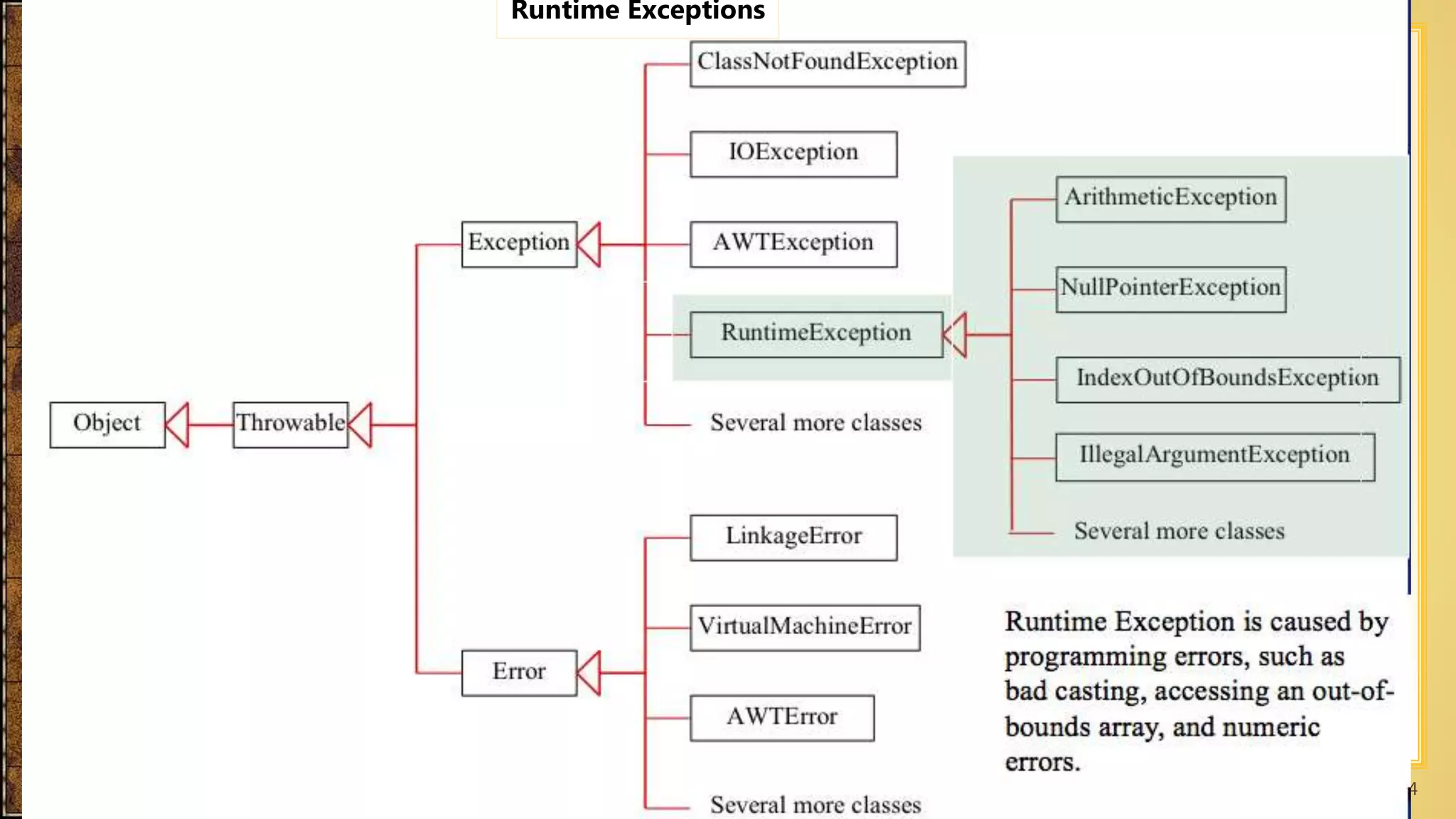








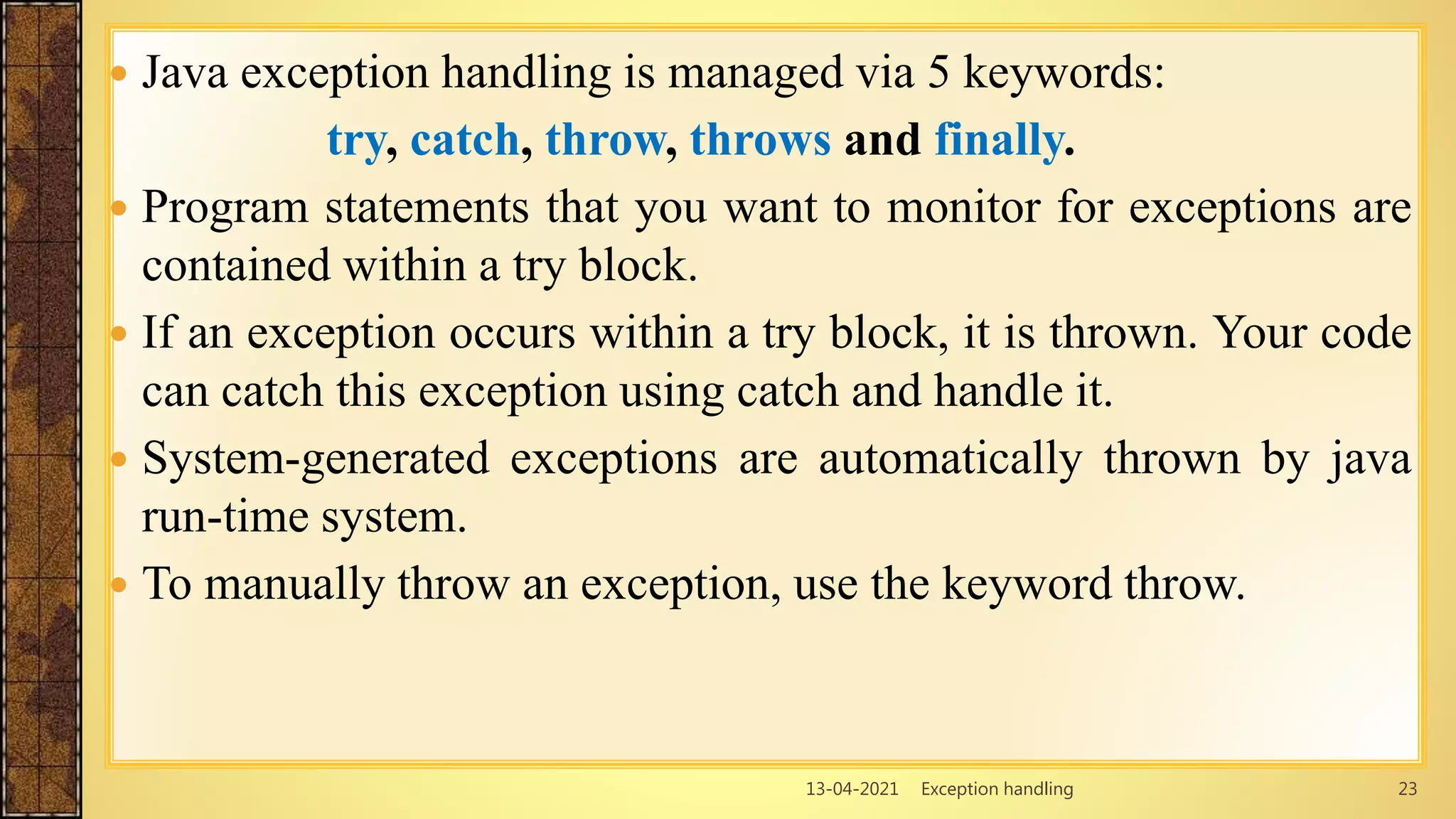
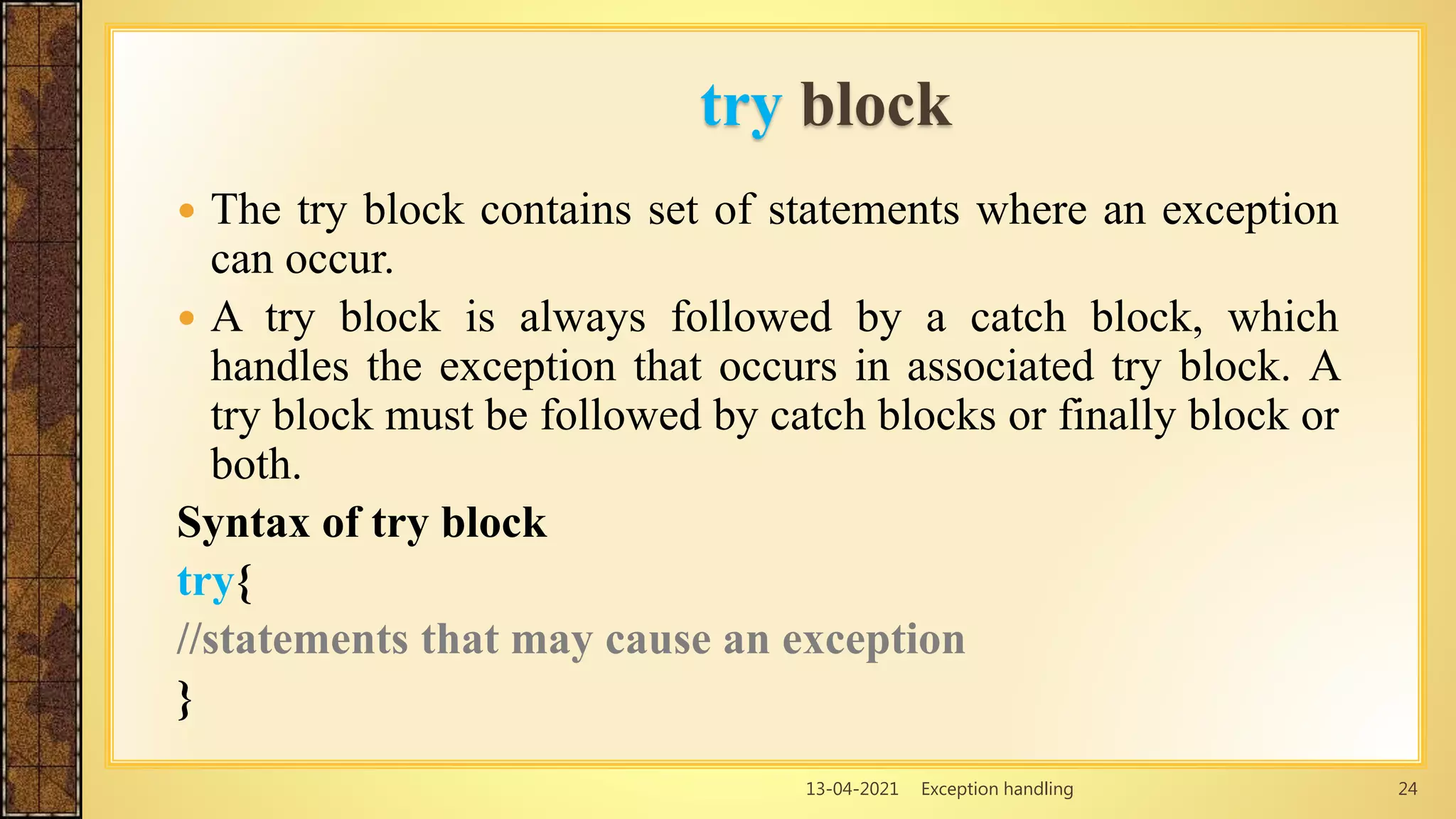
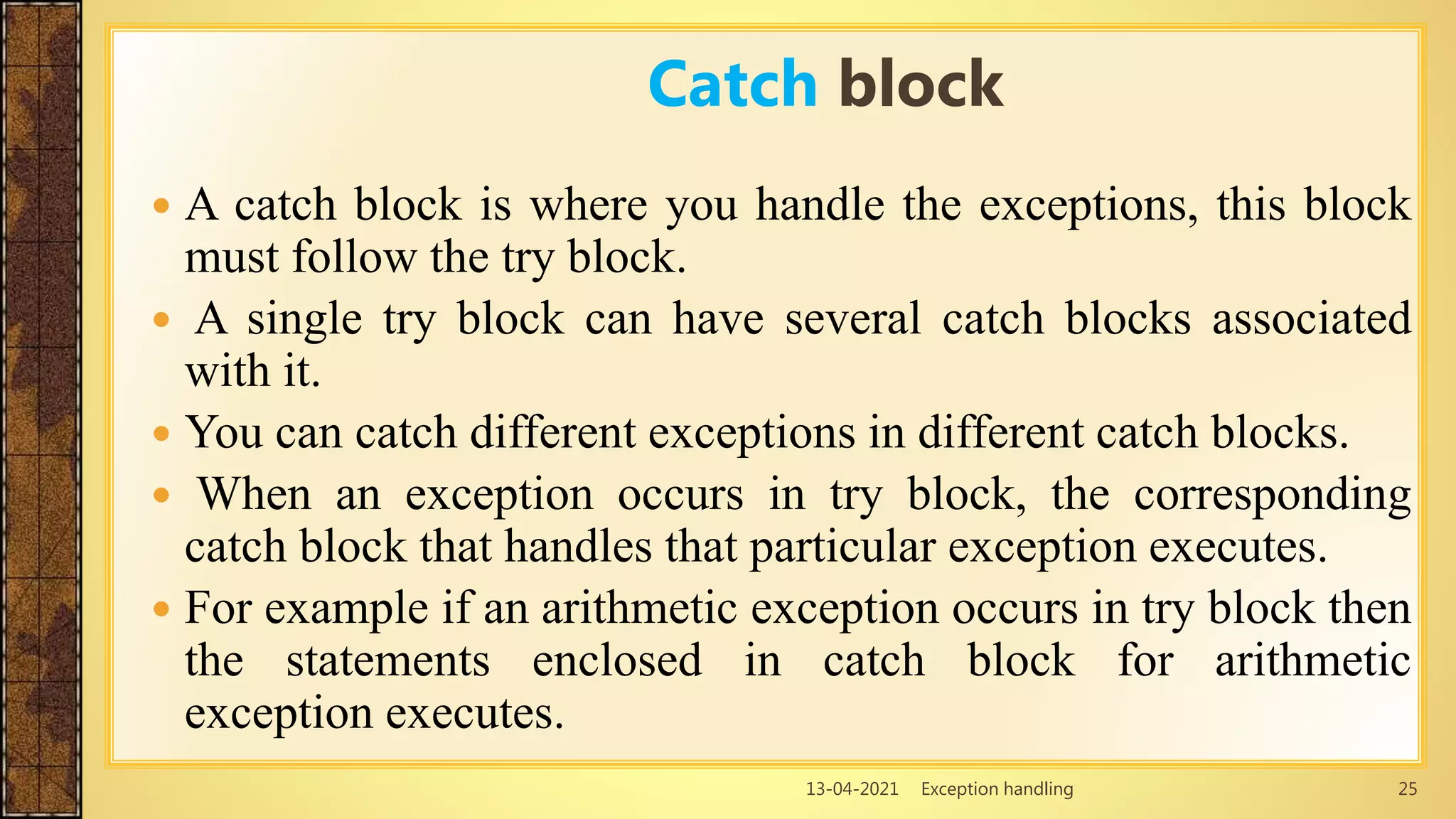
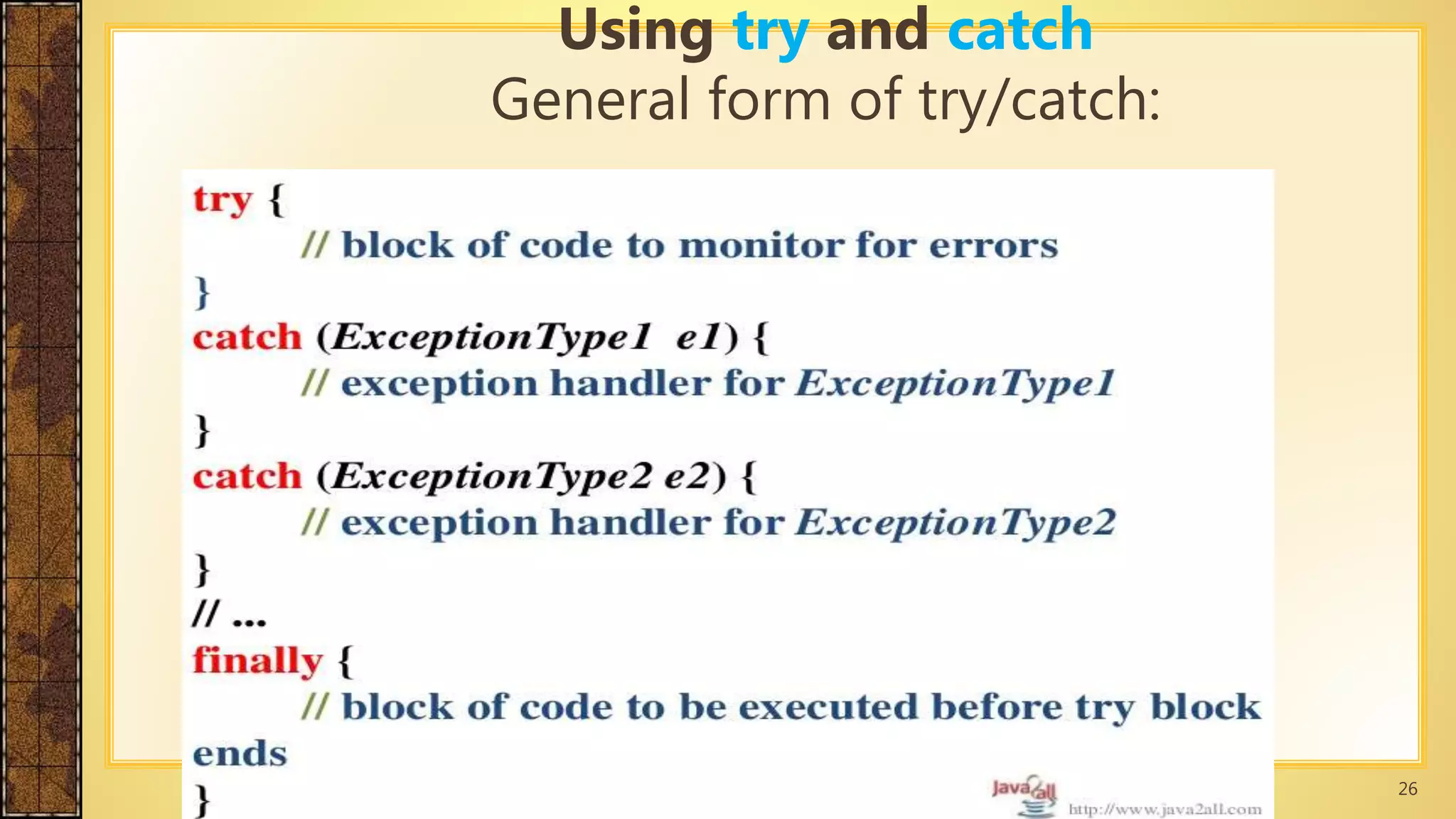

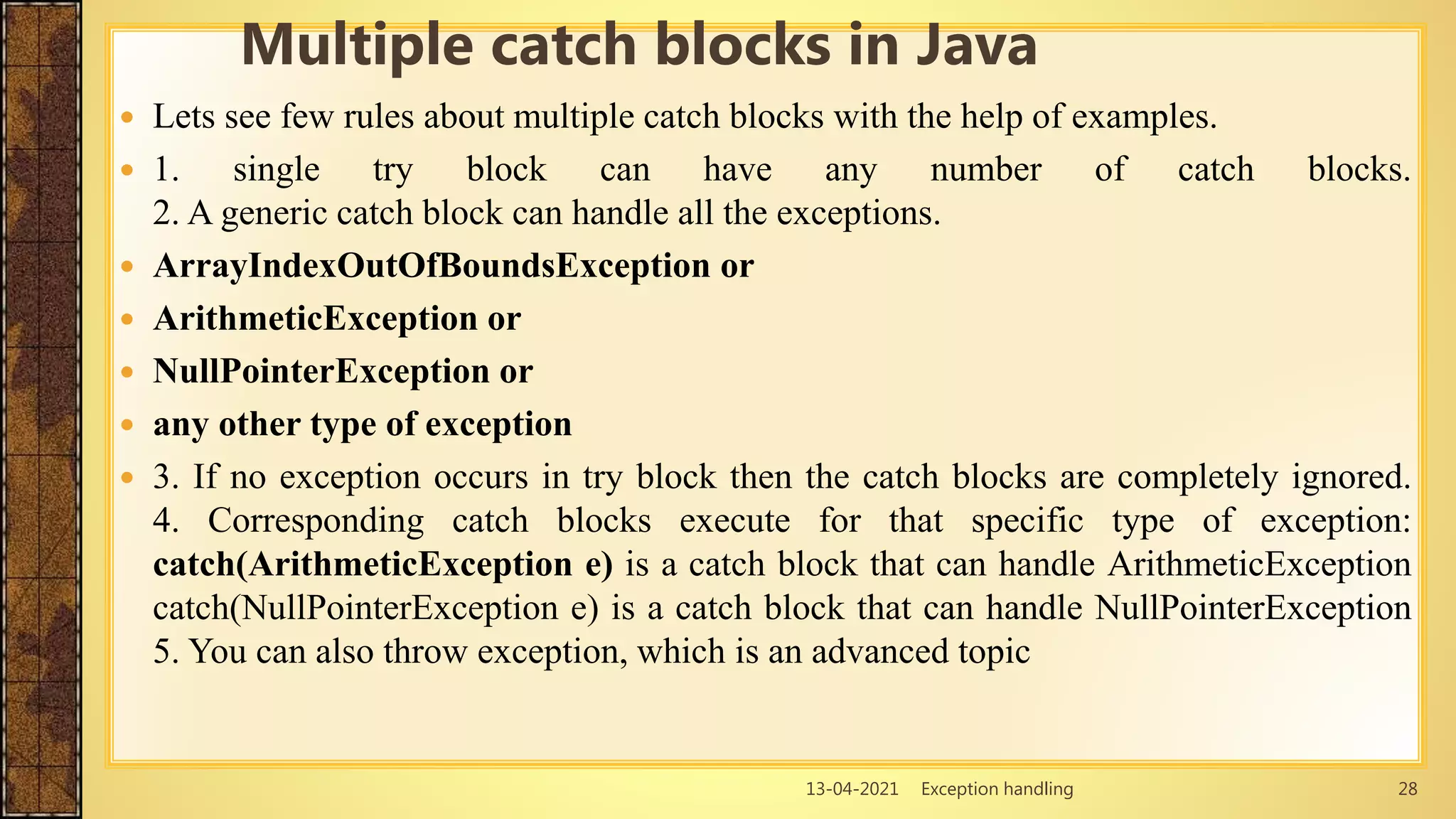
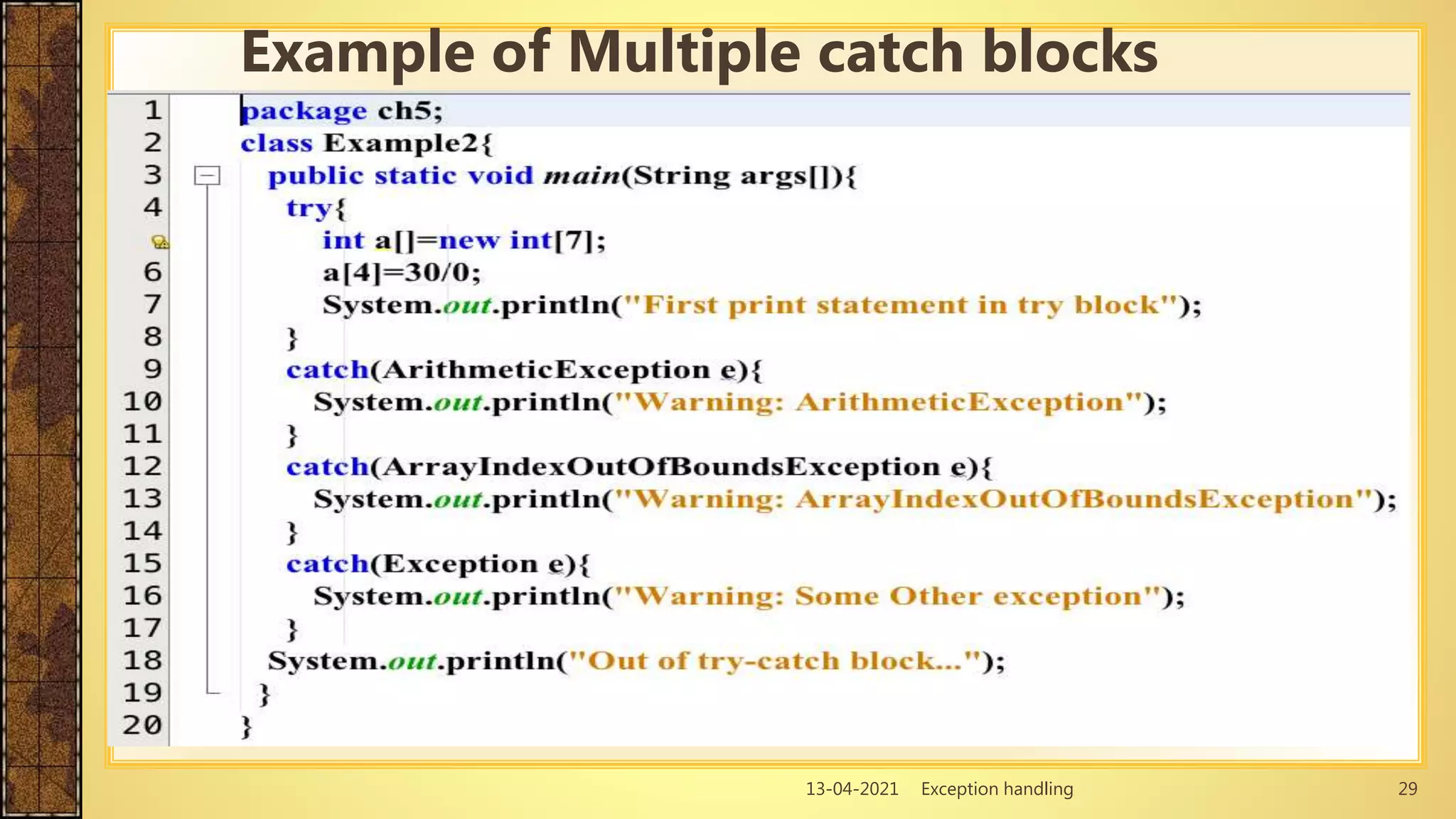

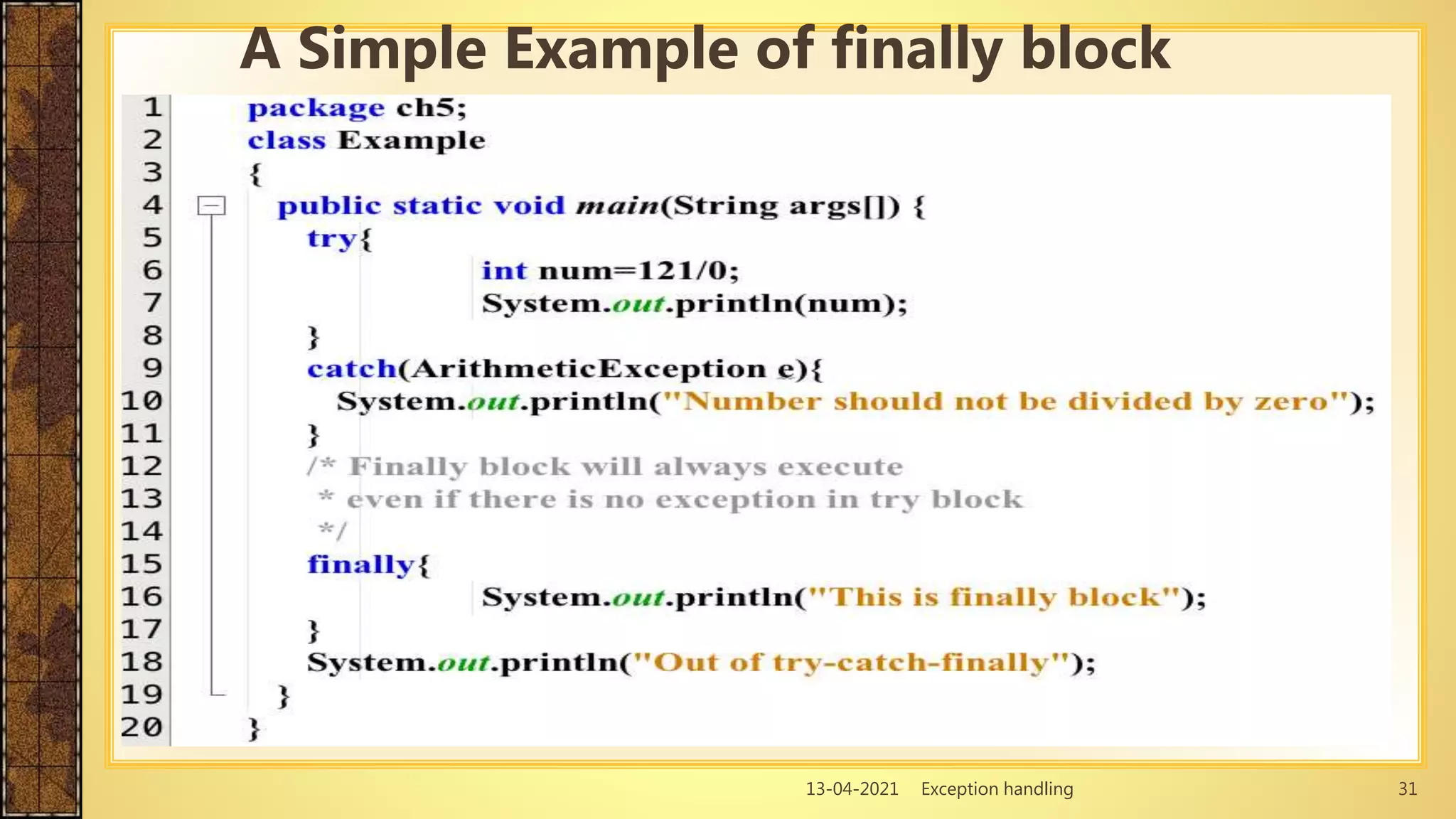
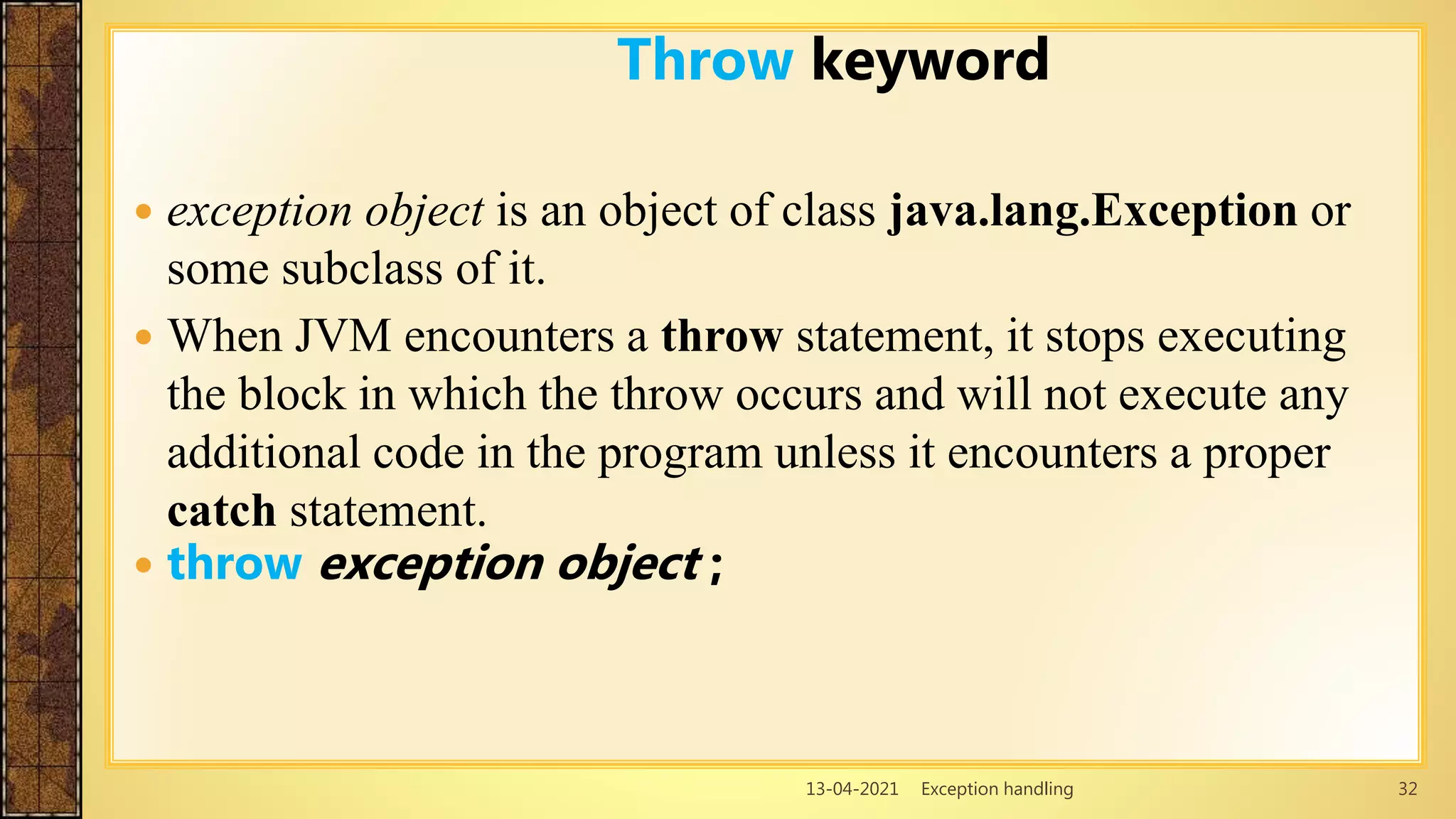



![13-04-2021 Exception handling 36
public void myMethod() throws ArithmeticException, NullPointerException
{
// Statements that might throw an exception
}
public static void main(String args[]) {
try {
myMethod();
}
catch (ArithmeticException e) {
// Exception handling statements
}
catch (NullPointerException e) {
// Exception handling statements
}}](https://image.slidesharecdn.com/chapter5-210413090345/75/Chapter-5-36-2048.jpg)




